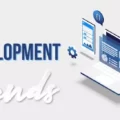Between supply chain issues, inflation and the Great Resignation, business owners must starting adapting now to thrive in the near-future.

The last two years have been especially difficult for small business. The good news is that it’s made many entrepreneurs smarter, stronger and more adaptable. The bad news, though, is that difficult times are just getting started. Surviving and thriving in the coming years will require entrepreneurs to demonstrate grit and an ability to adapt quickly and implement the right strategies.
No rose-tinted glasses
Things may look better in some ways than they did in 2020 and 2021. Much of the world is gradually re-opening and returning to “normal” life. But the truth is we’re still living in the aftermath of the pandemic. Scores of small businesses were forced to close their doors, while big-box retailers like Best Buy, Target and Lowe’s were allowed to remain open, raking in record profits. This was a massive consolidation of market share, essentially stolen from small businesses and handed to giant corporations on a silver platter. It’s also created a significantly more challenging and less equitable business environment. SPONSORED CONTENT:
Pascal Wilpers Joins 2022 Forbes Business CouncilBy: Impex Trading Group
The pandemic also ushered in the remote workforce, and now that the genie is out of the bottle, there’s no going back. Businesses that adapted, survived and, in many cases, thrived; those that didn’t largely died off. And managing a remote workforce meant business owners had to more proactively measure performance based on the value contributed to the company. This showed many business owners that their companies could run more efficiently, and in some cases, that they didn’t need as large of a workforce.
Related: Inflation Is a Risk for Your Business, But Doesn’t Have to Spell Doom
More recently, a new problem grew out of the pandemic, and that is The Great Resignation. Between the upheaval in the job market, the shift to a remote workforce and the realization by employees that they now have far more bargaining power than ever before, millions are now choosing to work only on their own terms. Many simply left the traditional workforce and either started doing gig work or launched their own businesses. Others stayed but demanded more control over their schedule, better pay and benefits, and they no longer tolerated a workplace culture that didn’t suit them.
The inflation issue
Now, on top of all of this, business owners are faced with skyrocketing inflation, which hits them on two fronts. First, it causes the costs of everything to go up, eroding purchasing power and making consumers more cautious. And second, it reduces buying volume and frequency, which slashes small business revenue. The situation is especially troubling when you consider that roughly 70% of GDP is consumer-driven.
At the same time, we’re faced with the supply chain crisis, which affects small business, big business and consumers alike, but in different ways. The problem for small business is that since big business buys products, supplies, equipment and raw materials at a much greater volume, they get to cut to the front of the line. This often leaves small-business owners without what they need to run their companies. Throw in the port delays, truckers protesting and the threat of global war, and it’s easy to see how it’s likely to get worse before it gets better.
How will the government and the market respond?
The government has already put an end to many of the fiscal policies created to address challenges caused by the pandemic. The rest are soon to follow. While that’s the right thing to do, it’s also going to create predictable problems. For the last two years, millions of Americans have been handed money from the government, and now that’s going to be taken from them. It’s a lot like throwing a household pet into the wild and expecting it to thrive after it’s been fed and protected for its entire life. This will to lead to financial problems for a significant portion of the U.S. population.
Additionally, interest rates are going to be raised by the Federal Reserve to combat inflation. There is no way to avoid this since we’re facing the first real growth of inflation in roughly 40 years. It also increases the cost of everything and reduces the availability of credit. Both can be devastating to small businesses.
And as the U.S. debt goes up, so do our debt payments, which sucks money out of the private sector, killing growth in the private sector. This destroys the GDP and leads to a brutal downward economic spiral. Historically, that then leads to increased regulations as the government tries to regain control. Unfortunately, this rarely has a positive effect, and only makes things more difficult for small businesses.
We will likely see increased inflation, growing interest rates, higher prices and, possibly, a recession. The only real questions are how severe will it be and how long will it last?
A roadmap to adaptation
This doesn’t all have to be guesswork. While this may be the first time in our lifetime that we’ve seen a Covid-like pandemic, it’s not the first time we’ve seen the resulting economic uncertainty. In recent decades, we faced the 2008 housing collapse, the dot-com bubble, massive inflation in the 1970s and 1980s and other smaller economic crisis. The foundational strategies for thriving through these types of environments is basically the same.
Reduce or eliminate debt
Debt, when properly and carefully leveraged, can be a powerful tool during good economic times, but it can be poisonous during times of economic uncertainty. So the first thing you need to do is start working aggressively to eliminate debt. This gives you more available cash flow, which is the lifeblood of a company and helps you to survive the lean times, allowing you to be more agile and seize opportunities that your more heavily leveraged competitors may not be able to. If you can’t eliminate your debt, you should convert open lines of credit and revolving debt into fixed, and ideally low-interest, debt.
Differentiate and innovate
Next, look for opportunities to differentiate and innovate, and then execute on those opportunities as quickly as possible to create a powerful competitive advantage. That’s why Apple took over the U.S. phone market when they released the iPhone in 2007 and still domimnate it today. Differentiation can ensure you’re perceived as uniquely valuable, rather than just another commodity that has to compete primarily on price.
Differentiation comes down to effective branding and marketing. It’s not necessarily what makes your company better, but what makes it different. That may sound counterintuitive, but hear me out: Better is subjective. What makes one product or service better to me may mean absolutely nothing to you, or you might even see that feature as a disadvantage. Sticking with the iPhone example, technologically speaking, it is objectively not the best. Many other phones have better cameras, faster processors and more storage. But it is different. It’s dead simple to use, and people love it for exactly that reason. Figure out what makes your company different. What will make it stand out from your competitors? Then make it your mission to embrace and leverage that.
Innovation is more complicated but well worth the monumental effort it typically requires. But you also need to be prepared for failure here because there is no sure-fire formula. When we innovate, it’s not about simply improving some aspect of your product or service. Blockbuster improved its service by offering a broader selection of movies and games, selling snacks and launching various rewards programs, among other things. Netflix, on the other hand, innovated by making all of that completely irrelevant when they gave consumers the ability to stream movies in the comfort of their own homes. Innovation is what transforms an industry.
Optimize your workforce
It’s also important to optimize your workforce. That means making sure you have the right people in the right roles in order to maximize productivity, efficiency and employee satisfaction. The latter will help soften or preempt the impact of The Great Resignation on your business; happy, satisfied employees tend to stick around longer.
You should also leverage automation where it makes sense. This is a delicate balancing act. You should typically automate mindless tasks, but almost never tasks that involve interaction with customers or potential customers. For example, you might set up an automation that generates a Dropbox folder as soon as you create a new customer in Quickbooks. But you absolutely should not automate a DM that’s sent to someone as soon as they follow you on social media.
When you get this right, it allows your team to focus on the skilled tasks that only they can do while taking the mindless tasks off their plate. This keeps them in their “genius zone,” which leads to a happier and more productive team.
Related: 3 Ways Small Businesses Can Survive the Supply-Chain Crisis
Build, nurture and leverage the right relationships
Relationships can be one of your most important assets in business because they lead to ideas, opportunities and partnerships. This is especially important during an uncertain economy, and can mean the difference between going out of business, surfing or thriving during these times. This includes relationships with your team, customers, vendors and supplier and industry contacts. And, yes, your competitors.
But these relationships aren’t going to materialize out of thin air. You’ll need to invest time and energy into building and then nurturing them. Look for ways to consistently add value for these people and never treat the relationships in a transactional manner. Sometimes you’ll give more than you get, and other times the roles will be reversed. And your benefits won’t always be direct. You may help someone in your network in some way, and someone else may end up helping you in some way. So don’t keep score, but do keep an eye on who is consistently contributing in some way and maintain your network accordingly. That includes the following:
- Your team. Turnover and workforce shortages can devastate a business, so you need to invest the time to make sure your team members are not only fairly compensated but also feel valued and appreciated. There’s no shortcut here — you have to demonstrate a genuine interest in them beyond their role in your organization. You need to know about their hobbies, goals and dreams. What causes are they passionate about? What gets them excited in life? When you know details like this, you can build far stronger relationships and a far stronger company. Without your team, you don’t have a business.
- Vendors and suppliers. Building strong relationships with your vendors and suppliers is also essential because it ensures you’ll have the inventory and equipment you need to keep your business running. It’s especially important to broaden your pool far beyond what you currently need because you may need it to draw from when supplies dry up due to, say, supply chain issues. Smaller companies can build their own list using Google and a spreadsheet, but larger companies may want to use a purpose-built platform with up-to-date data, especially when needing to filter vendors by various criteria.
- Customers/clients. When customers/clients know that you truly care about them, it creates a more loyal relationship that can better withstand the challenges an uncertain economy brings. The specific approach will vary by industry, your brand positioning and the type and size of client you serve, but the key is staying in touch with them and consistently providing value in a non-promotional way. That might mean occasionally sending them a truly useful or memorable gift, actionable information, leads or business, or something else that’s actually for them, not just thinly veiled marketing. Remember—they are marketed to all day every day, so your efforts here have to be both useful and authentic.
Yes, overall economic conditions are volatile, but we also have more tools at our disposal than ever to weather what’s out of our control, so don’t panic. Adapt, survive and thrive.


























No Comments